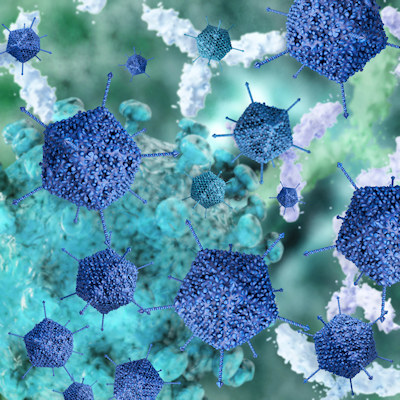September 19, 2022 -- The growth in demand for viral vectors is outpacing a push to add capacity, leading to predictions that the current supply shortage will continue despite investment in the space.
Viral vectors have emerged as key enablers of cell and gene therapies and, as such, demand has risen as more and more advanced therapy medicinal products have moved into clinical development and onto the market.
A recent report in Cell and Gene Therapy Business Outlook (CGTBO), a sister publication of ScienceBoard, sets out how the trends are impacting the nascent cell and gene therapy industry. As it stands, the industry needs 2 to 3 billion liters of bioreactor capacity to meet the current demand for viral vectors. Production cannot keep up with demand.
"Current needs require 2-3 billion liters of bioreactor capacity per year, and future needs will require about 5-6 million liters of bioreactor capacity per year. Change is needed for both upstream and downstream development, and a streamlined process would be desirable," states the CGTBO report.
The shortfall is a consequence of how viral vectors are made and the fact that drug candidates can move through development faster than manufacturers can add production capacity. As the report explains, viral vector production is inefficient and requires complex, specialized facilities, causing bottlenecks that have resulted in shortages of the critical components.
Service providers and pharmaceutical companies are adding capacity. The contract development and manufacturing organizations Catalent, Lonza, and Thermo Fisher Scientific have all committed to industry upgrades that will provide more capacity for development, with the latter buying the viral vector manufacturing specialists Brammer Bio and Henogen to enhance its capabilities.
Charles River Laboratories, a company that previously focused on development services, has moved into the production of viral vectors and gene therapies through the acquisitions of Cognate BioServices and Vigene Biosciences.
The investments should increase outsourced production capacity, but some pharmaceutical companies have decided they are best served by adding their own manufacturing capabilities. Gilead's Kite Pharma, Merck, and Sanofi are among the pharmaceutical companies to invest in in-house viral vector production capabilities that could insulate them from the problems, such as long lead times, created by the overall shortage of capacity.
That shortage is predicted to continue despite the investments, reflecting problems such as the limited number of people with expertise in developing viral vectors, the need for more processing technologies and the shortcomings of upstream and downstream development. The issues are forecast to prevent the industry from scaling up to meet the anticipated requirement for 5 to 6 billion liters of bioreactor capacity a year.
The demand forecast is underpinned by recognition that viral vectors are currently the preferred tool for delivering genetic material into cells, both for ex vivo engineering of cell therapies and for the delivery of gene therapies. However, the various types of viral vectors, such as lentiviruses and adeno-associated viruses, all have limitations. The limitations are driving investment in viral and nonviral delivery methods that are free from the restricted gene packaging capacities and immunogenicity of the current options.
Copyright © 2022 scienceboard.net









